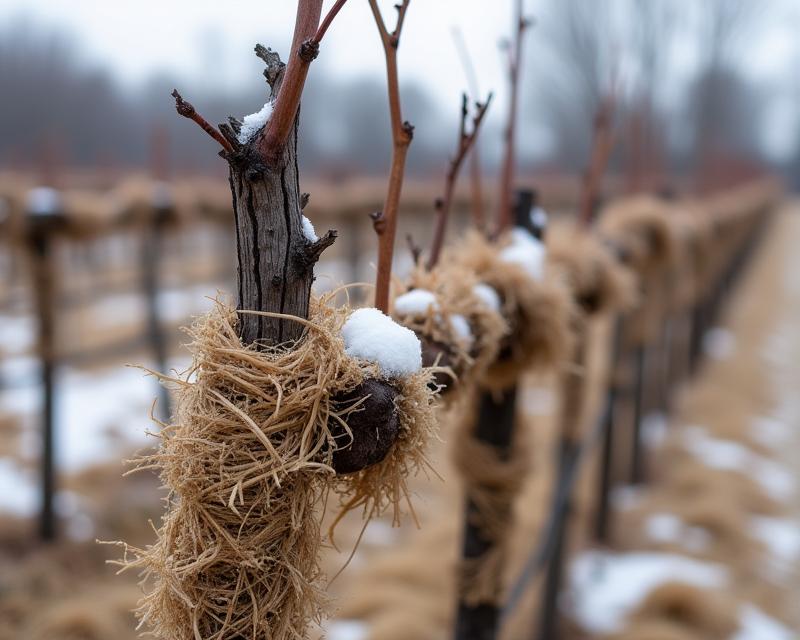Winterizing Your Grapevines: A Guide
Publish in Crops el 21/07/2025 20:37
Winterizing Your Grapevines: A Guide
Grapevines are beautiful additions to any farm or garden, promising delicious fruit for years to come. But harsh winters can pose a serious threat to these valuable plants, leading to damaged canes and reduced yields. Fortunately, with a little preparation, you can protect your grapevines and ensure a healthy start to the next growing season. This guide will walk you through essential winter protection techniques, particularly for those of us in northern climates.

Mulching for Insulation
One of the simplest and most effective ways to protect your grapevines is through mulching. Applying a thick layer of organic mulch around the base of the vines helps insulate the roots from freezing temperatures. Good options include straw, wood chips, or shredded leaves. Aim for a layer that's 4-6 inches deep, extending out as far as the drip line – the area beneath the outermost branches. Mulch helps retain soil warmth, prevents heaving (where the ground freezes and thaws, pushing the vines out of the soil), and reduces moisture loss. It's a straightforward process that makes a big difference!
Wrapping for Added Protection
For extra protection, especially during particularly cold spells, consider wrapping the trunks and canes of your grapevines. Materials like burlap, tree wrap, or even specialized grapevine protection sleeves work well. Start wrapping from the base of the vine and work your way up, overlapping each layer to create a barrier against wind and cold. This is particularly important for younger vines or those with delicate canes. Remember to leave some ventilation to prevent moisture buildup, which can lead to fungal diseases. You can also wrap individual canes that are particularly vulnerable to breakage from snow and ice load.
Pruning for Winter Health
Pruning is a crucial part of grapevine winter protection. While the timing varies depending on your region, generally, pruning is done during the dormant season, typically in late winter or early spring before bud break. The goal is to remove dead, damaged, or diseased wood and to shape the vine for optimal fruit production. Proper pruning encourages healthy growth and helps the vine withstand winter stresses. Consult local resources or experienced growers for specific pruning techniques suited to your grape variety and climate. Don't be afraid to ask questions – learning the right pruning methods will significantly improve your vine's long-term health and productivity.
By implementing these simple winter protection strategies, you can safeguard your grapevines from the damaging effects of cold weather and ensure a bountiful harvest in the years to come. A little effort now will pay off handsomely in the spring with vigorous growth and delicious grapes!





